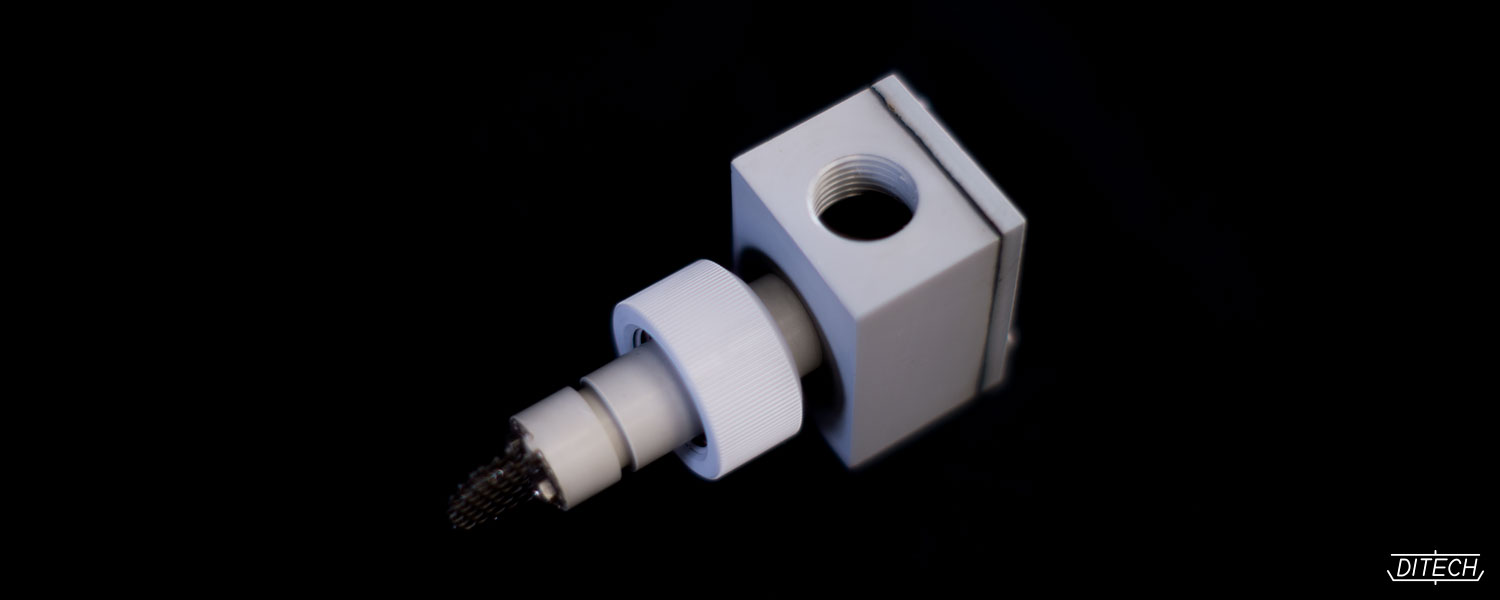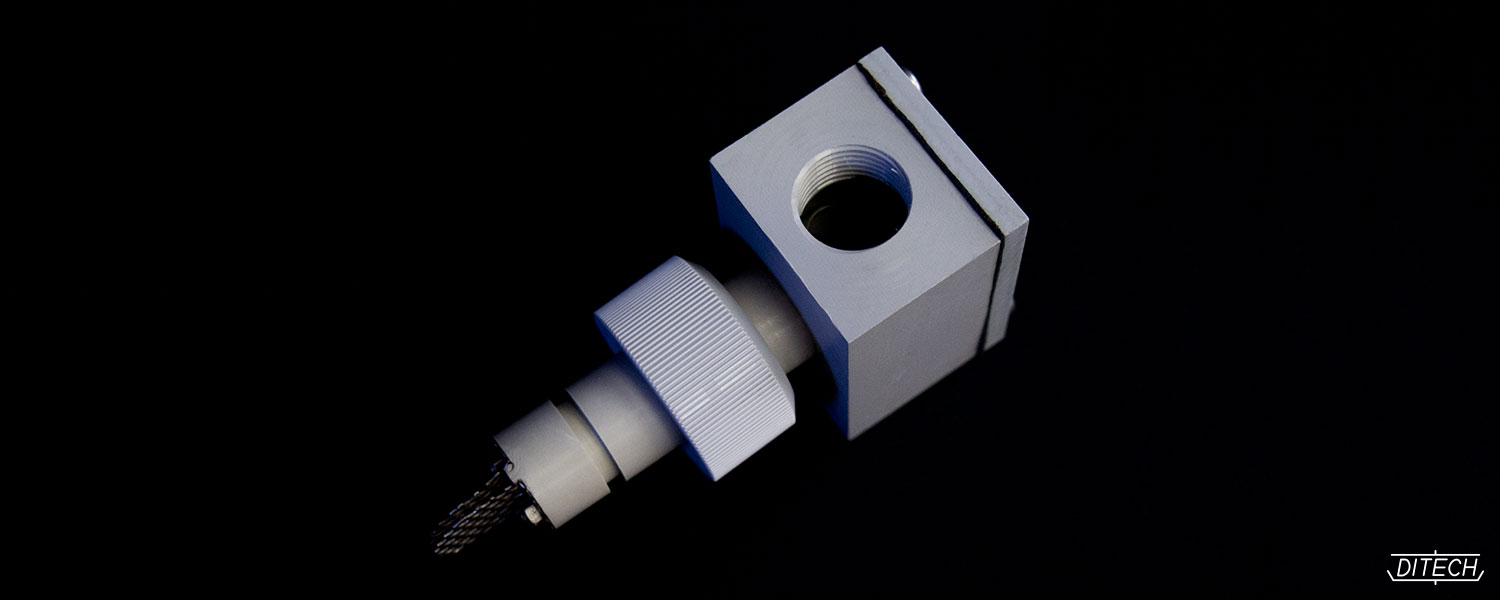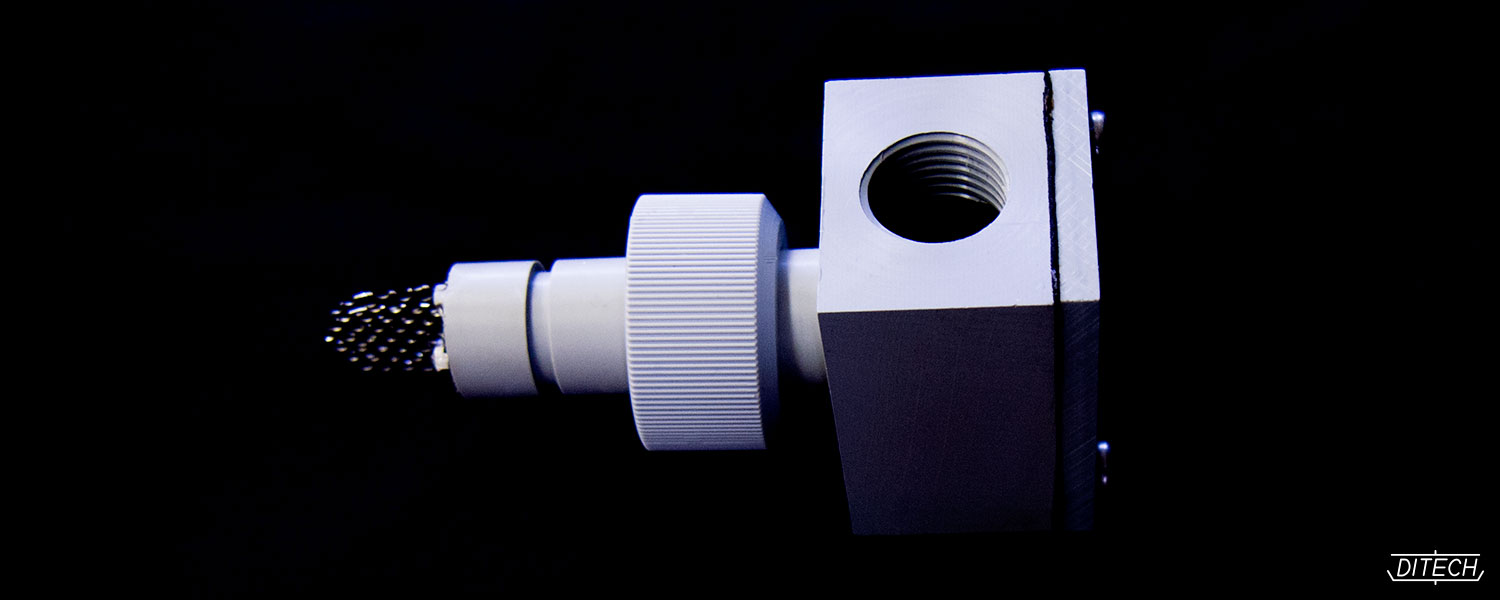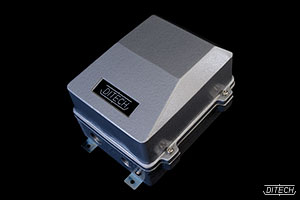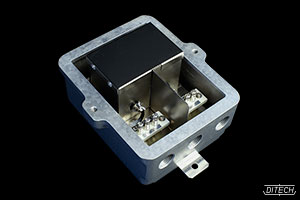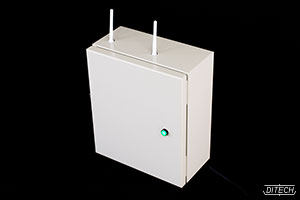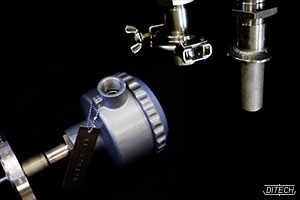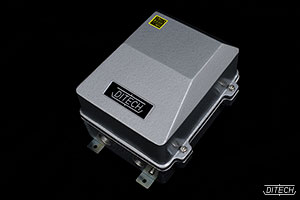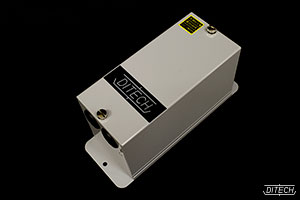Manufacturer of Level Switch, Level Transmitter,
Detector and Sensor DITECH,LTD.
Drain pipe leakage detector
NQS-LE
NSS-LE
proof
construction
Non-explosion-proof
Intrinsically safe construction(i3nG5)
to be
measured
Liquid leaking from pipes.
The drain pipe leakage detector is designed to detect liquid leaks from drain pipes and pipe joints.
DITECH’s proprietary impedance system and NQS/NSS model ensures stable detection by reducing stray capacitances to zero. One to 15 detector units can be connected in parallel to input signals to a transducer.
principles
When the meshed probe of the detector becomes wet due to a leak, a substantial decrease in impedance occurs. The meshed probe forms one side of the low-frequency impedance bridge. Liquid leaks cause the bridge to become out of balance. This signal is amplified and used to actuate the relay.
| Measurement system | Impedance bridge measurement system |
| Output signal | Model NQS-LE: a,c,b 250V 5A (non-inductive load) / Open collector / Thyristors / SSR Model NSS-LE (Model PS-7):a,c,b 200V 1A 100VA (non-inductive load) |
| Input power | Model NQS-LE: AC105V/210V 50/60Hz or DC24V Model NSS-LE (Model PS-7): AC105V/210V 50/60Hz |
| Power consumption | Model NQS-LE: 7W Model NSS-LE: 4W |
| Allowable temperature | Detector: Depends on the specifications Transducer: Model PS-1LE: -10℃~+50℃ Transducer: Model TR-1LE: -25℃~+70℃ Power source: Model PS-7: -10℃~+50℃ Special cable: Model DSC-15 (high accuracy use): -10℃~+60℃ Special cable: Model DSC-05 (small size): -10℃~+60℃ Special cable: Model DSC-13 (heat resistance use): -50℃~+200℃ |
| Allowable pressure | Depends on the specifications |
| Weight | Transducer: Model PS-1LE: 4.3kg Transducer: Model TR-1LE: 4.3kg Power source: Model PS-7: 2.0kg |
| Size | Transducer: Model PS-1LE: 200(W)×149(D)×220(H) Transducer: Model TR-1LE: 200(W)×149(D)×220(H) Power source: Model PS-7: 80(W)×101(D)×210(H) (mm) |
| Installation | Detector: Flange mounting Screws mounting, etc. |
| Material | Detector: SUS304 Vinyl chloride, etc. |
Model NQS-LE
(Non-explosion-proof type)
<Separated transducer type>
This model is composed of detector unit, transducer and special cable.
Model NSS-LE
(Intrinsically safe construction / i3nG5)
<Totally separated transducer type>
This model is composed of detector unit, transducer, relay power source and special cable that is 3 core control cable. As the transducer is designed to be installed in a dangerous area, the special cable can be made short enough to minimize picked-up noises, thus permitting a stable performance to be obtainable. As to performance, this model has the same characteristics as those of Model NQS-LE.
 DITECH,LTD.
DITECH,LTD.